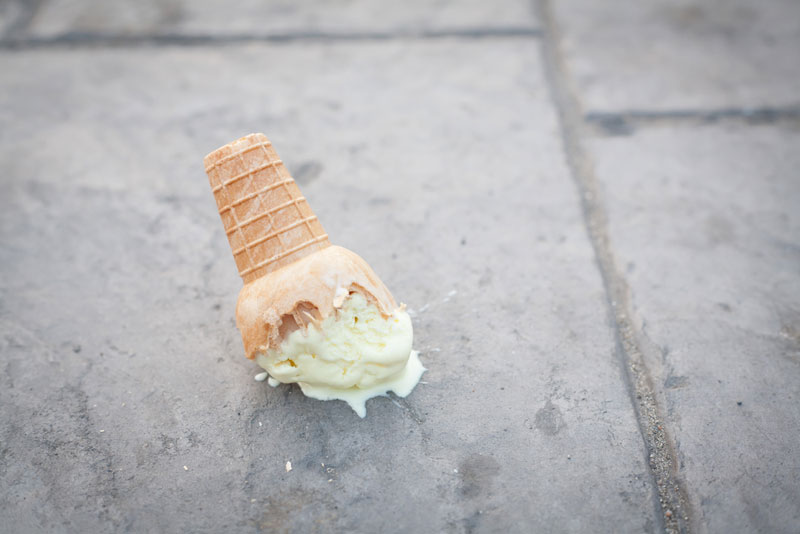Still Good? 5-Second Rule a Myth, Study Finds

If you're tempted to eat food you've dropped on the floor, you may want to think again: A new study disproved the "5-second rule," or the idea that food is safe to eat off the floor if you pick it up fast enough, the researchers said.
Turns out, bacteria from a surface can transfer to food very quickly, in less than a second in some cases, the study found.
"The 5-second rule is a significant oversimplification of what actually happens when bacteria transfer from a surface to food," study co-author Donald Schaffner, a microbiologist and professor at Rutgers University in New Jersey, said in a statement. "Bacteria can contaminate instantaneously."
In the study, the researchers contaminated four different surfaces — stainless steel, ceramic tile, wood and carpet — with bacteria. Then, the investigators dropped food on the surfaces, and allowed the food to sit for a certain amount of time: less than a second, 5 seconds, 30 seconds or 5 minutes. The scientists tested four food types: watermelon, bread, bread and butter, and gummy candy. [Top 7 Germs in Food That Make You Sick]
Results showed that, in general, the longer the food was allowed to sit on the surface, the more bacteria was transferred to the food. But some bacterial contamination happened in less than a second.
Watermelon picked up the most bacteria, while gummy candies picked up the least. The high rate of contamination for watermelon was likely due to the food's moisture level, the researchers said.
"Bacteria don't have legs. They move with the moisture, and the wetter the food, the higher the risk of transfer," Schaffner said. In regards to the surface, carpet had a low rate of bacteria transfer to the food, compared to the other surface types, the researchers said.
Sign up for the Live Science daily newsletter now
Get the world’s most fascinating discoveries delivered straight to your inbox.
The study shows that, in terms of how much bacteria accumulates, other factors can be of equal or greater importance than the amount of time the food sits on a surface, the researchers said. These other factors can include the type of food that you drop and the surface it falls on.
"The risk of illness resulting from deciding to consume food that has fallen on the floor will depend on factors including prevalence, concentration and type of organism; the nature of the food (especially moisture); the nature of the surface; as well as the length of time the food is in contact with the surface," the researchers wrote in their paper, which was published online Sept. 2 in the journal Applied and Environmental Microbiology.
A 2014 study that also tested the 5-second rule similarly found that the amount of time food sits on a surface does affect the amount of bacteria that are transferred to the food. But the researchers of that study, from Aston University in the United Kingdom, reached a different conclusion. They said that their findings provided a scientific basis for the 5-second rule, because food that's picked up from the floor after a few seconds is less likely to be contaminated than food that's left for a longer amount of time. That study was not published in a peer-reviewed journal.
Original article on Live Science.

Rachael is a Live Science contributor, and was a former channel editor and senior writer for Live Science between 2010 and 2022. She has a master's degree in journalism from New York University's Science, Health and Environmental Reporting Program. She also holds a B.S. in molecular biology and an M.S. in biology from the University of California, San Diego. Her work has appeared in Scienceline, The Washington Post and Scientific American.










